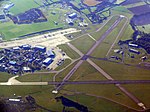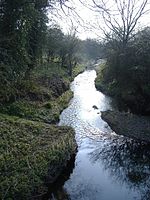Wilts & Berks Canal Trust
Charities based in WiltshireTransport in WiltshireUse British English from March 2018Waterways organisations in England
The Wilts & Berks Canal Trust is a registered charity no. 299595, and a waterway society based in Wiltshire, England, concerned with the restoration of the Wilts & Berks Canal. The Trust is the successor to the Wilts & Berks Canal Amenity Group (formed in 1977) and a founder member of the Wiltshire, Swindon & Oxfordshire Canal Partnership, which embraces the Trust, the local authorities for the areas through which the route of the canal passes, statutory bodies, and other interested parties. The Trust's headquarters are at Dauntsey Lock, adjacent to the canal between Chippenham and Royal Wootton Bassett.
Excerpt from the Wikipedia article Wilts & Berks Canal Trust (License: CC BY-SA 3.0, Authors).Wilts & Berks Canal Trust
B4069,
Geographical coordinates (GPS) Address Nearby Places Show on map
Geographical coordinates (GPS)
| Latitude | Longitude |
|---|---|
| N 51.52056 ° | E -2.00697 ° |
Address
B4069
SN15 4HD , Dauntsey
England, United Kingdom
Open on Google Maps








